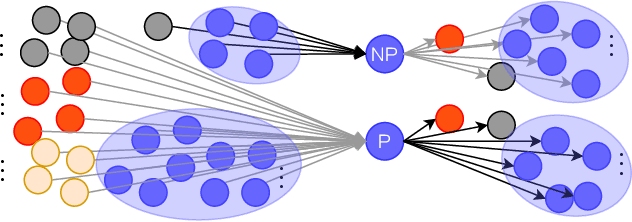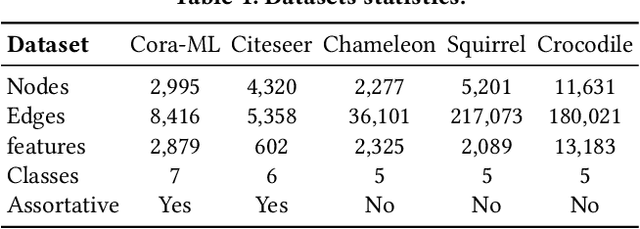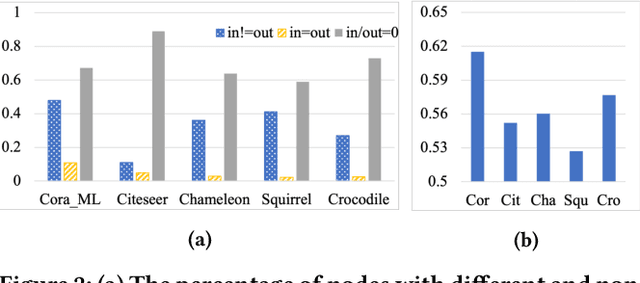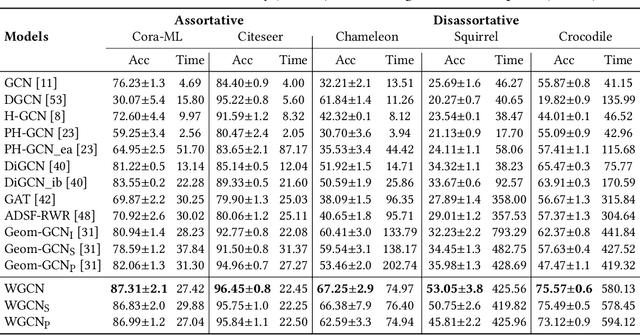WGCN: Graph Convolutional Networks with Weighted Structural Features
Paper and Code
Apr 29, 2021



Graph structural information such as topologies or connectivities provides valuable guidance for graph convolutional networks (GCNs) to learn nodes' representations. Existing GCN models that capture nodes' structural information weight in- and out-neighbors equally or differentiate in- and out-neighbors globally without considering nodes' local topologies. We observe that in- and out-neighbors contribute differently for nodes with different local topologies. To explore the directional structural information for different nodes, we propose a GCN model with weighted structural features, named WGCN. WGCN first captures nodes' structural fingerprints via a direction and degree aware Random Walk with Restart algorithm, where the walk is guided by both edge direction and nodes' in- and out-degrees. Then, the interactions between nodes' structural fingerprints are used as the weighted node structural features. To further capture nodes' high-order dependencies and graph geometry, WGCN embeds graphs into a latent space to obtain nodes' latent neighbors and geometrical relationships. Based on nodes' geometrical relationships in the latent space, WGCN differentiates latent, in-, and out-neighbors with an attention-based geometrical aggregation. Experiments on transductive node classification tasks show that WGCN outperforms the baseline models consistently by up to 17.07% in terms of accuracy on five benchmark datasets.
 Add to Chrome
Add to Chrome Add to Firefox
Add to Firefox Add to Edge
Add to Edge